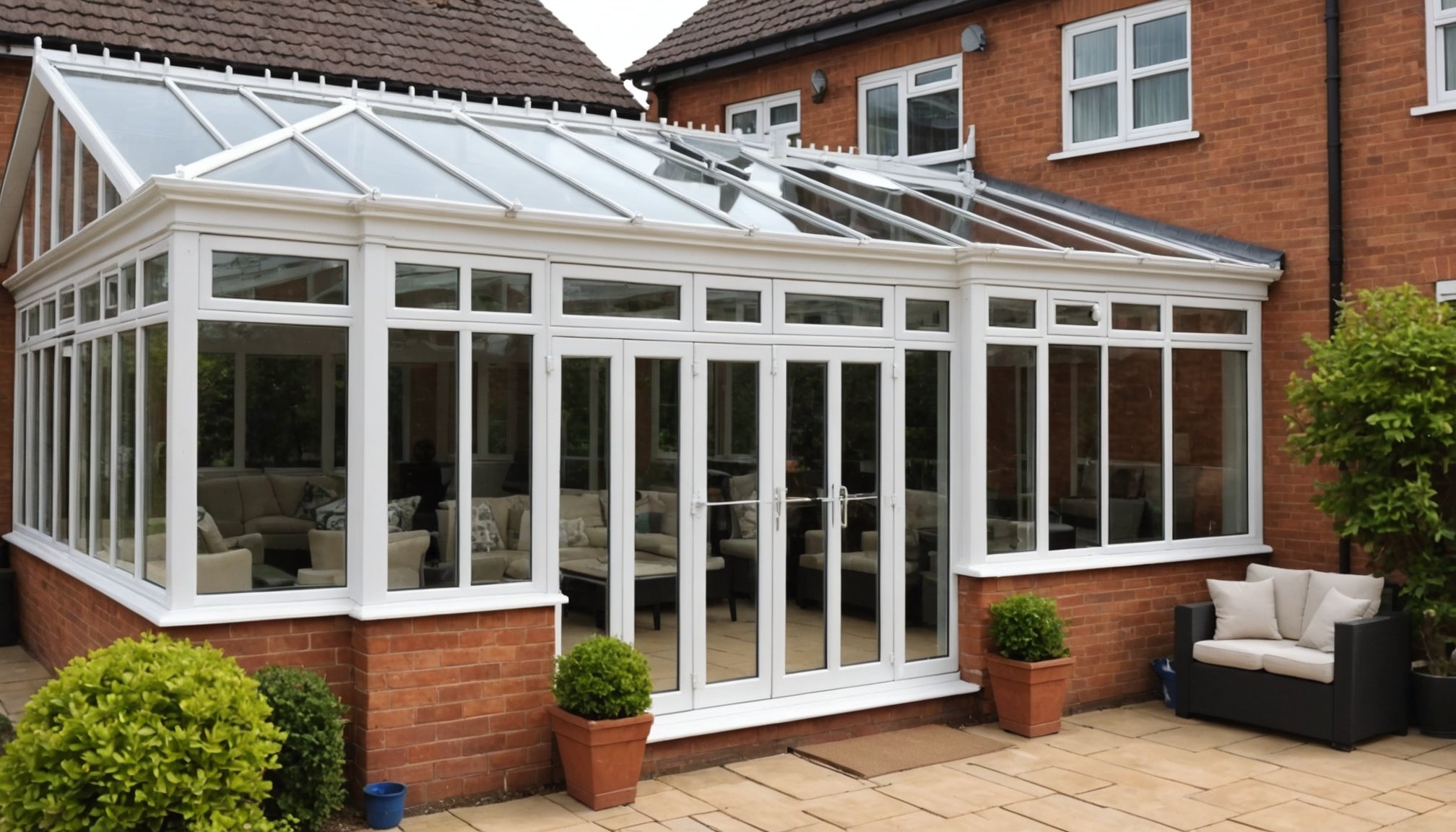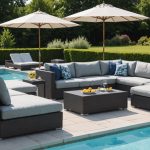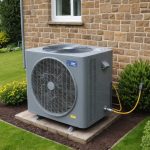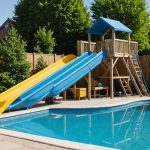Understanding the Importance of Conservatory Insulation
Proper conservatory insulation is crucial for enhancing comfort throughout the year. By regulating the inside temperature, it transforms the conservatory into a usable space irrespective of the external weather. Effective insulation maintains a cool environment during sweltering summers and retains warmth in chilly winters, ensuring pleasant conditions year-round.
The energy efficiency of a home significantly improves with well-insulated conservatories. This type of insulated space reduces the need for heating or cooling systems to run continuously, leading to noticeable savings on energy bills. In fact, homeowners often observe a decrease in energy consumption, thus lowering overall household expenses.
Also read : Discover the Best Color Schemes for a Warm and Inviting Cottage Living Room in the UK
The UK’s climate, known for its variability, can heavily influence the performance of a conservatory. Fortunately, installing the right kind of insulation can counteract climate challenges. This involves minimising heat loss during cold spells and discouraging excessive heat gain when temperatures rise, enhancing the insulated room’s functionality.
By understanding these key factors and implementing the appropriate insulation techniques, homeowners can fully reap the benefits of conservatory insulation. It not only bolsters comfort and energy efficiency but also mitigates the impacts of changing weather, making a conservatory a practical extension of the living space.
Topic to read : Top Techniques for Reviving Stained Glass Windows in UK Heritage Homes: A Comprehensive Guide
Insulating Materials for Your Conservatory
Choosing the right insulation materials can significantly impact your conservatory’s thermal performance. Let’s dive into the types of insulation and how they compare.
Types of Insulation Materials
When it comes to insulation materials for conservatories, several options are available. Some of the most popular include:
- Foam Board: Lightweight and easy to install, foam board provides good insulation with minimal thickness. It’s particularly useful in conservatories with limited space.
- Fiberglass Batts: Known for their affordability, fiberglass batts are effective but may be less desirable due to difficulties in installation and potential moisture accumulation.
- Multi-Foil Insulation: Offering excellent thermal performance, multi-foil insulation is a bit more expensive but ensures energy efficiency.
Comparative Analysis of Insulation Options
Each insulation material offers distinct thermal performance advantages. Foam boards balance cost and efficiency, while fiberglass works better in dry settings. For maximum thermal performance, multi-foil materials are a superior choice despite the higher cost. Making the right choice depends on your conservatory’s specific needs, available insulation materials, and budget.
Product Recommendations from Leading Suppliers
Several UK suppliers offer high-quality insulation materials. Thermal performance should guide your selection; suppliers like Kingspan, Celotex, and SuperFoil provide top-notch options. Be sure to evaluate warranty and customer reviews when sourcing from these companies.
Seasonal Insulation Strategies
Understanding the basics of seasonal adjustments is crucial to maintaining home comfort efficiently. When considering winter insulation, focus on sealing leaks around windows and doors. This step prevents heat loss, ensuring your home’s warmth. For summertime, shift your strategy towards temperature regulation by ensuring attic vents are clear to promote air circulation, which helps keep your home cool.
Here are some practical comfort tips for the seasons:
-
Winter: Use heavy drapes to retain heat, and regularly check the attic insulation’s condition. This will assist in keeping the indoor air warm while saving on energy costs.
-
Summer: Opt for light-coloured curtains to reflect sunlight and reduce indoor heat. Ceiling fans can also aid in circulating air, providing a cooling effect without excessive reliance on air conditioning.
Seasonal maintenance plays an integral role as well. In spring and fall, inspect and clean your HVAC systems. Ensuring these systems are in prime condition enhances overall insulation effectiveness and promotes adequate temperature control year-round. These targeted strategies for seasonal insulation ensure you achieve an all-year comfort balance while maximising efficiency.
Energy Saving Techniques
In today’s environmentally conscious world, implementing energy efficiency tips is both a financial and ecological imperative. One area where individuals can see significant savings is through integrating cost-saving measures that simultaneously embrace eco-friendly practices.
Smart Thermostats and Their Benefits
Smart thermostats offer a seamless way to optimise energy consumption by analysing your home’s energy patterns and adjusting settings accordingly. They allow users to remotely control the temperature via smartphone apps, ensuring energy isn’t wasted while no one is at home. Additionally, these thermostats can provide detailed energy usage reports, allowing for informed decisions that enhance both comfort and energy efficiency.
Utilizing Window Treatments
Another effective energy-saving technique involves thoughtful use of window treatments. By installing insulated curtains or reflective blinds, you can reduce heat loss during winter and limit heat gain in summer. This simple measure greatly contributes to maintaining a comfortable indoor climate while reducing reliance on heating and cooling systems.
Energy-efficient Heating Solutions
Switching to eco-friendly heating solutions like heat pumps or hybrid systems can significantly enhance comfort while conserving energy. These systems efficiently transfer heat rather than generating it, thus requiring less electricity and producing fewer emissions. By embracing these eco-friendly practices, you can reduce both your carbon footprint and utility bills.
Long-term Maintenance for Insulation Systems
Regular maintenance is crucial for preserving the effectiveness and longevity of insulation systems. Focusing on maintenance tips can ensure that your insulation performs optimally over time. By routinely inspecting for damage, sealing gaps, and cleaning any debris, you can prevent issues that compromise thermal performance.
Investing in high-quality insulation systems may initially seem costly, yet a thorough cost-effectiveness analysis reveals significant long-term savings. Quality materials not only reduce energy bills but also require fewer repairs and replacements. Thus, the initial expenditure is often offset by decreased maintenance and energy costs over time.
To maximize the lifespan of your insulation, consider these strategies:
- Use moisture barriers to combat dampness, which can degrade materials.
- Ensure proper ventilation to prevent condensation and mould build-up.
- Conduct bi-annual inspections to detect and address small issues before they escalate.
These proactive measures contribute substantially to the durability and performance of insulation systems, resulting in enhanced cost-effectiveness. By employing these maintenance strategies, homeowners can ensure their insulation remains effective, energy-efficient, and long-lasting. This approach not only safeguards the investment but also enhances overall home comfort.
Local Regulations and Incentives
Understanding UK building regulations is crucial for ensuring compliance and maximizing the efficiency of your conservatory insulation project. These regulations dictate the minimum standards for construction and energy efficiency in residential properties. They often require specific insulation types and methods to maintain adequate thermal performance. Compliance not only guarantees quality but also ensures safety and efficiency in your projects.
Overview of Relevant Building Regulations
UK building regulations set standards for modifications, including specifications for materials and insulation. These regulations are designed to enhance energy efficiency and minimize environmental impact. For conservatories, they might include stipulations on U-values—a measure of thermal transmittance—and other factors ensuring energy conservation.
Available Energy Efficiency Grants
Securing energy efficiency incentives can significantly reduce costs. Various local grants are available to help homeowners improve their properties’ energy performance. These grants often cover a portion of the costs associated with insulation projects, making them financially beneficial. Checking eligibility criteria and applying for these grants can provide substantial savings.
Engaging Local Authorities
Engaging with local authorities is pivotal for accessing available benefits. They can provide guidance on compliance and recommend suitable energy efficiency incentives. Establish a dialogue with them early to ensure you comply with regulations and make informed decisions on grants and enhancements.
Real-life Case Studies
Real-life success stories provide invaluable insights into the impact of quality insulation projects. These practical examples not only demonstrate the benefits but also offer strategies that can be applied in diverse situations.
Homeowners who have undergone successful insulation upgrades often share user testimonials highlighting significant improvements in comfort and energy savings. One common narrative is the enhanced temperature regulation inside the home, which eliminates cold spots in winter and traps cool air during summer, reducing the need for additional heating or cooling. Consequently, households report a noticeable reduction in energy bills, creating a financially viable outcome complemented by environmental benefits.
Case studies reveal a trend of strategies that stand out in effectiveness. Frequently mentioned are methods such as using High-R insulation materials, applying proper air sealing techniques, and focusing on attic and wall insulations. These strategies ensure comprehensive coverage, addressing common weak points and exemplified by homeowners achieving up to 30% energy savings.
In summary, by analysing these real-world applications, one gathers not only data but firsthand experiences that guide future insulation projects, underpinning the practical benefits emphasized by those who have implemented these solutions successfully.
Expert Insights and Recommendations
Gaining a deeper understanding of conservatory insulation starts with expert advice. Not only will this ensure best practices are followed, but you’ll also benefit from professional insights that are invaluable.
Interviews with Insulation Specialists
Speaking with insulation specialists provides homeowners with tailored advice, helping them make informed decisions. These professionals emphasize the importance of selecting the right insulation materials. The type of conservatory, its dimensions, and even the local climate are crucial in making these decisions. They recommend materials like reflective foil or thermal plasterboards to ensure optimal insulation effectiveness.
Best Practices for DIY Insulation
For those embarking on DIY insulation, specialists share numerous best practices. Key among these is ensuring accurate measurements to avoid material wastage. The professionals also stress safety precautions, such as wearing protective gear and ensuring proper ventilation during installation. They highlight the benefits of consulting online resources or local workshops before beginning.
Future Trends in Conservatory Insulation
Emerging innovations promise to revolutionize conservatory insulation. In interviews, experts point to trends such as eco-friendly materials and smart temperature regulation systems. These advancements are not just environment-conscious but also improve energy efficiency, highlighting the importance of staying updated with current and future technologies in insulation.











